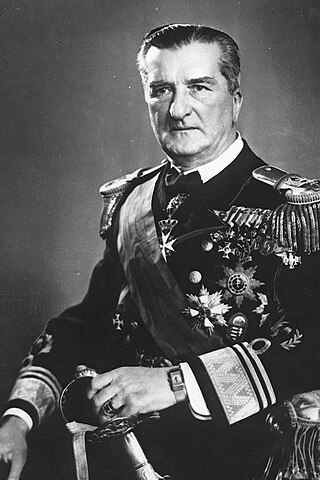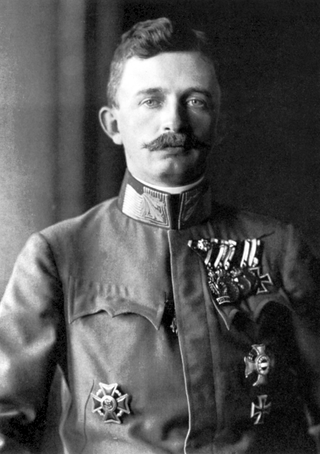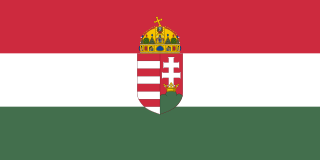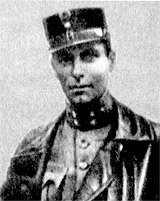| |||||
| Decades: | |||||
|---|---|---|---|---|---|
| See also: | Other events of 1921 List of years in Hungary | ||||
The following lists events in the year 1921 in Hungary .
| |||||
| Decades: | |||||
|---|---|---|---|---|---|
| See also: | Other events of 1921 List of years in Hungary | ||||
The following lists events in the year 1921 in Hungary .

Miklós Horthy de Nagybánya was a Hungarian admiral and statesman who was the regent of the Kingdom of Hungary during the interwar period and most of World War II, from 1 March 1920 to 15 October 1944.

Sopron is a city in Hungary on the Austrian border, near Lake Neusiedl/Lake Fertő.

The Kingdom of Hungary was a monarchy in Central Europe that existed for nearly a millennium, from the Middle Ages into the 20th century. The Principality of Hungary emerged as a Christian kingdom upon the coronation of the first king Stephen I at Esztergom around the year 1000; his family led the monarchy for 300 years. By the 12th century, the kingdom became a European power.

Gyula Gömbös de Jákfa was a Hungarian military officer and politician who served as Prime Minister of Hungary from 1 October 1932 to his death.

Count István Bethlen de Bethlen was a Hungarian aristocrat and statesman and served as prime minister from 1921 to 1931.

István Friedrich was a Hungarian politician, footballer and factory owner who served as prime minister of Hungary for three months between August and November in 1919. His tenure coincided with a period of political instability in Hungary immediately after World War I, during which several successive governments ruled the country.

Lajtabánság, or the Banate of Leitha, was a short-lived western Hungarian state in the region where the Austrian federal state of Burgenland now exists. It existed between 4 October and 10 November 1921, following the Treaty of Trianon and the departure of the rump Kingdom of Hungary's army and after the Sopron plebiscite was held in the area according to the Venice protocol.

The "Rongyos Gárda" were a non-regular paramilitary unit in Hungary, active in 1921 then reestablished in 1938.

After Miklós Horthy was chosen Regent of Hungary on 1 March 1920, Charles I of Austria, who reigned in Hungary as Charles IV, made two unsuccessful attempts to retake the throne. His attempts are also called the "First" and "Second Royal coups d'état" respectively.

After the collapse of a short-lived Communist regime, according to historian István Deák:

The Kingdom of Hungary, referred to retrospectively as the Regency and the Horthy era, existed as a country from 1920 to 1946 under the rule of Miklós Horthy, Regent of Hungary, who officially represented the Hungarian monarchy. In reality there was no king, and attempts by King Charles IV to return to the throne shortly before his death were prevented by Horthy.

Pál Prónay de Tótpróna et Blatnicza was a Hungarian reactionary and paramilitary commander in the years following the First World War. He is considered to have been the most brutal of the Hungarian National Army officers who led the White Terror that followed Hungary's brief 1919 Communist coup d'état.

István Rakovszky de Nagyrákó et Nagyselmecz was a legitimist Hungarian politician. During the Second Royal coup d'état, Charles IV returned to Hungary to retake his throne. The attempt was unsuccessful. The king formed a rival government in Sopron and appointed Rakovszky as Prime Minister.
The Battle of Budaörs was a minor armed clash on 23–24 October 1921 between the governmental forces of the Kingdom of Hungary and the loyalist forces of Charles IV of Hungary, who tried to reclaim the throne of Hungary after his resignation in 1918.

The White Terror in Hungary was a two-year period (1919–1921) of repressive violence by counter-revolutionary soldiers, carried out to destroy any supporters of Hungary's short-lived Soviet republic and its Red Terror. Tens of thousands were imprisoned without trial, and as many as 1,000 people were killed. Furthermore, between 1,250 and 2,500 Jews, who were targeted in particular, were killed and tens of thousands more injured between 1919 and 1921. Assuming all Jews were traitors and communists, far-right militias raped, robbed, and massacred them.

Iván Héjjas was a Hungarian anti-communist soldier and paramilitary commander in the years following the First World War. He played eminent role in the anti-communist and anti-Semitic purges and massacres during the White Terror in the period between 1919 and 1921. As a member of various far-right groups and parties, he was a member of parliament from 1927 to 1931.
The following lists events in the year 1919 in Hungary.
The following lists events in the year 1918 in Hungary.
The following lists events in the year 1920 in Hungary.
The following lists events in the year 1922 in Hungary.